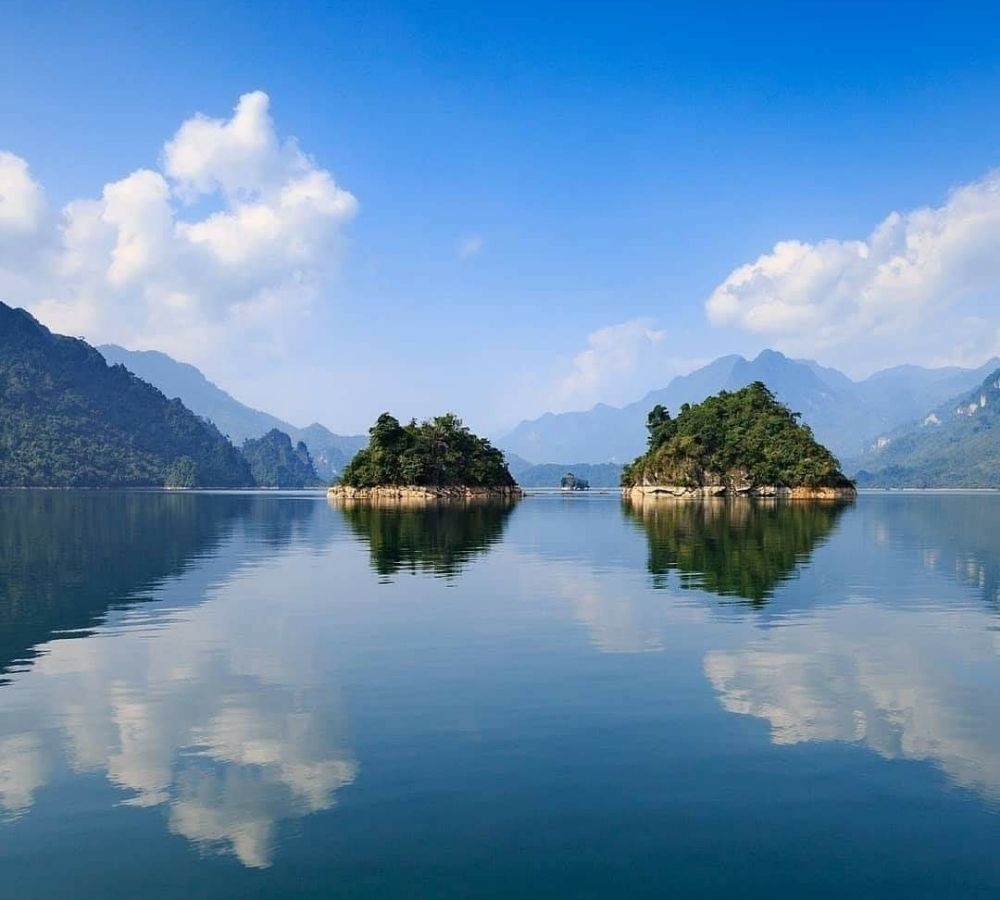
What You Need To Know About Ba Be National Park?
What You Need To Know About Ba Be National Park
One of the top 10 best Vietnam National Parks, located in Bac Can Province, roughly 240 kilometers from Hanoi, Ba Be National Park is sometimes commonly referred to as Ba Be Lake.
It covers around 23,000 acres and is home to numerous beautiful waterfalls, deep rivers, valleys, lakes, and caves among the many towering peaks.
The region is home to a wide variety of cultural groups. The well-known Ba Be Lake is really composed of three smaller lakes linked by canals totaling eight kilometers in length.
Downstream boat rides on the lake are always peaceful because of the water's placid surface. In 2004, ASEAN recognized Ba Be National Park as a site of natural heritage. Incentives and joint partnership initiatives have been established to increase park visitors.
>>Read more: Phu Quoc National Park Travel Guide In 2024
Introduction
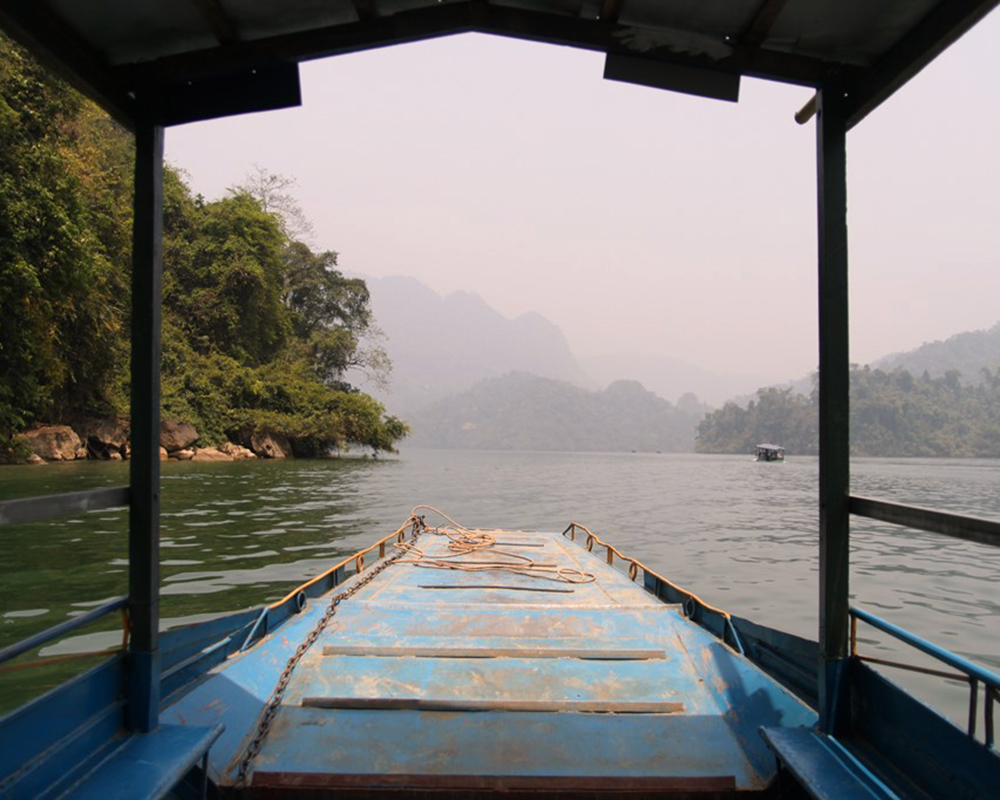
The three rivers of Ta Han, Bo Lu, and Leng support the lowland evergreen forests on the limestone mountains that make up Ba Be National Park, contributing to the park's rich biodiversity.
There are 1,268 plant species in Ba Be National Park, many of them important and uncommon. These plants are documented in the Vietnam Travel guide Book of Vietnam and the World. Trees like the "Nghien", "Dinh", "Lim", "Truc Day", and "Lat Hoa" are extremely valuable and rare; the "Truc Day" bamboo is a unique species to Ba Be and grows frequently on the cliffs, making for a stunning scenery.
Both local and international researchers agree that the national park is the best place in Vietnam (and perhaps all of Southeast Asia) to see rare orchid species. There are 470 vertebrate species and 106 fish species, making the fauna and fish system exceptionally diverse.
>>Read more: All Things You Need To Know Phong Nha-Ke Bang National Park
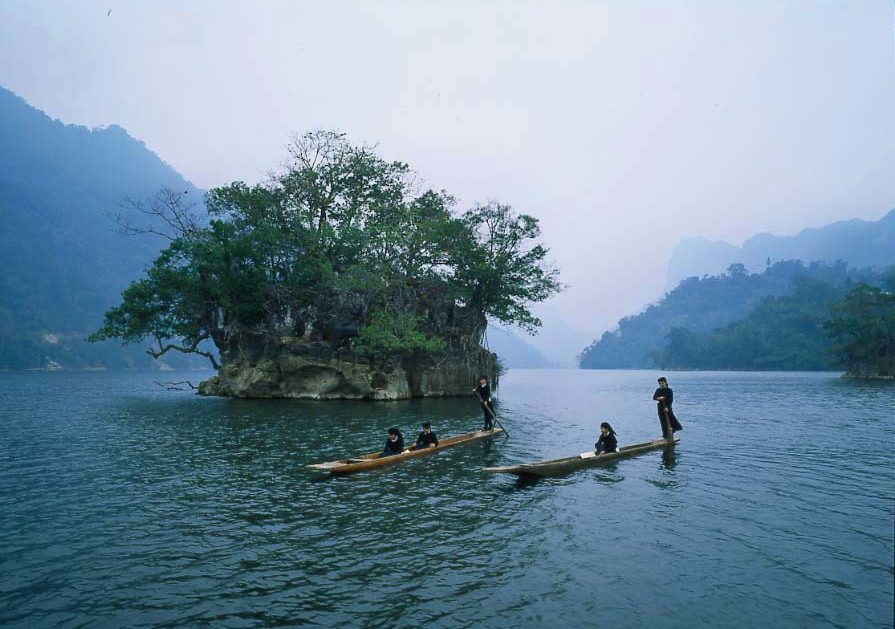
Ba Be Lake, which stretches up to 8 kilometers in length and 500 meters in width, is at an elevation of around 178 meters above sea level and serves as the park's focal point.
This is Vietnam's largest and highest freshwater lake, and it's completely natural. As another "natural mountain lake with significant benefit in Vietnam," Ba Be Lake is also worth mentioning.
The Tay people referred to these lakes as "Slam Pe" (Pe Leng lake, Pe Lu lake, and Pe Lam lake), which translates to "three lakes" (Ba Be). Almost 8 kilometers in length from north to south, Ba Be Lake is one continuous body of water fed by innumerable tiny streams. A lot of people call Ba Be "Halong Bay on land" because of how beautiful it is.
The park ranked third in Vietnam and 1938th in the world among wetland areas of international importance in 2011.
>>Read more: Visit Hoang Lien National Park: Comprehensive Travel Guide
Ba Be Lake: Its Myth and Legend
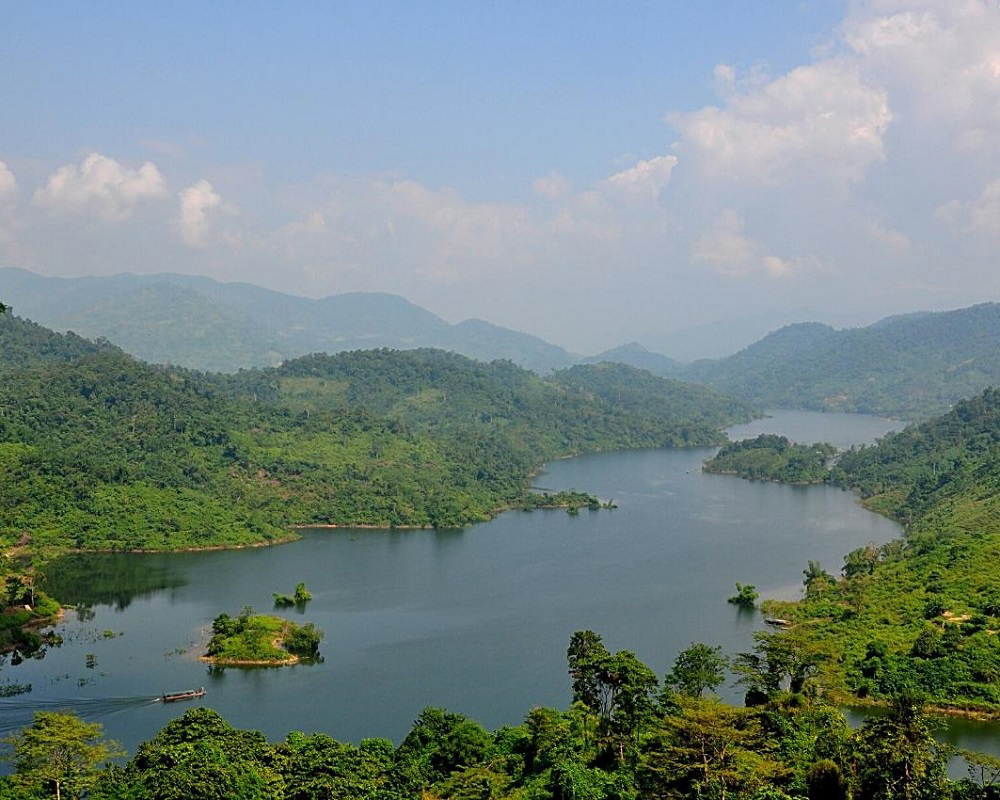
Once upon a time, a geriatric beggar made her way to the town. At every stop, she proclaimed, "I'm famished. Kindly show some compassion.
But no one helped her; in fact, everyone ran away from her out of fear. Thankfully, there was a widow and her son who did not find the worn and tattered beggar repulsive, and they welcomed her into their home.
The snoring of the beggar woke the mother up at midnight. When she opened her eyes, she was terrified to discover a huge dragon lying there instead of a frail elderly lady.
The mother shuddered but held back her tears for fear that her son and she might be eaten by the dragon. Instead of a dragon, the mother found a beggar awake and ready to leave at first light.
In parting, the beggar handed the widow a bag of ash and added, "Vicious people should be severely chastised, but I'll help you - decent people.
This evening, scatter the ash around the property. Get up on that high peak if you want to get away.
>>Read more: Ca Mau National Parks: All Things You Need To Know
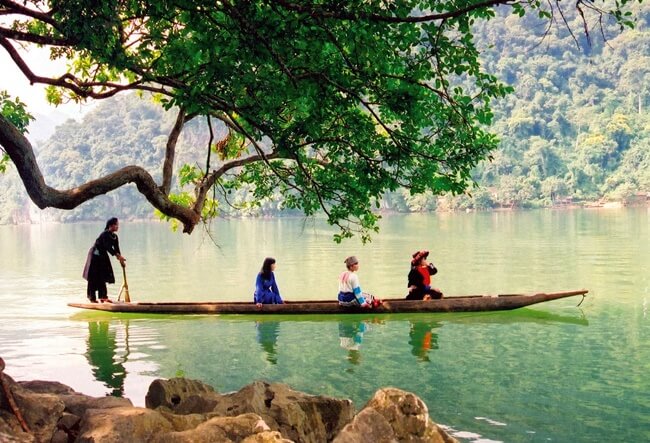
The elderly lady then pulled several patties out of her pocket and instructed, "Bite the patties to take out the rice." Rice prevents starvation, and rice husks can save your lives.
After making this statement, the elderly lady vanished. They doubtlessly told the locals their bizarre tale, but no one believed them.
The ground began to gush with water in the middle of the party that night. Everything was submerged in water in a matter of minutes. Somehow, just the widow's and her son's home were damaged.
Taking the beggar's counsel to heart, the woman threw the husk into the sea, where it immediately took on the form of a boat. They were on their way to the village to save everyone there.
Ba Ba Lake presently sits in the spot where natural springs once gushed forth.
When would you recommend going?
Spring and winter (the dry season) are ideal times to visit Ba Be Lake. The park is busiest in August and September, when the weather is nice but there are also the most visitors. Even in the off-season, a trip to Ba Ba Lake is enjoyable.
A Road Trip to Ba Be National Park: Directions from Hanoi
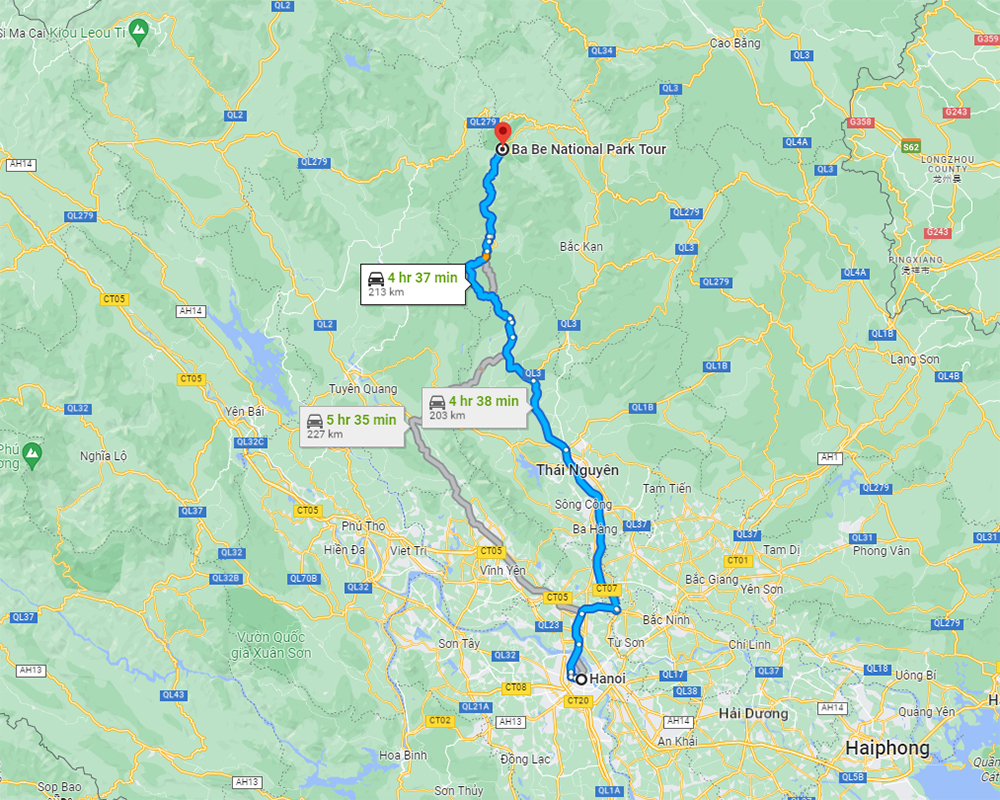
Bac Can Province, which contains Ba Be National Park, is situated north of Hanoi by the same distance. Traveling to Ba Be takes around 6 hours, but the breathtaking views are definitely worth the time and effort!
From Hanoi, visitors can make the journey to Ba Be National Park via local bus, motorbike, or, for those who value their privacy, private automobile arranged by Vietnam Car Rental.
Places to stay when visiting Ba Be
Visiting Ba Be National Park and staying with a local family in a homestay will provide you with the most authentic and gratifying experience conceivable.
In a particular section of Ba Be National Park, you can find a collection of homestay lodgings managed by members of local minority groups.
They are simple, yet clean and comfortable, with shared facilities. Some of the most well-known homestays in Ba Be are Mr. Linh's Homestay, Ba Be Lakeview Homestay, The Sang Homestay, Quynh Mai Homestay, Ba Be Green Homestay, etc. Guests can expect to pay around $15 USD each night for lodging, which will also cover their food costs.
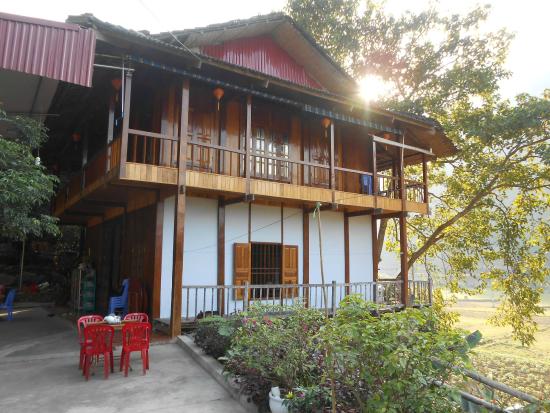
You can also find a state-run hotel (Sai Gon - Ba Be Resort) at the park's entrance, but we recommend a homestay instead so that you can be even more immersed in the local culture and experience the area firsthand. If you'd rather stick with the familiar and private, that's fine too.
Ba Be Lakeside Bungalow is a lodging option, but it's not for everyone. The lodge is missing some of the most basic amenities found in modern hotels. Bungalows, for example, do not have televisions because its visitors are supposed to have a "rural experience" away from civilization.
>>Read more: Bidoup Nui Ba National Park: All Things You Need To Know
Ba Be National Park: Things to Do
If you're planning a trip to the northeast, a great place to start is Ba Be National Park in the Ba Be District of Bac Kan Province.
There is a great variety of flora and wildlife, as well as interesting geology and scenery, to explore, including Fairy Pond, An Ma Temple, and Dau Dang waterfall.
One of the best ways to get a sense of the place is to go kayaking on one of the three lakes. Guided motorboat tours are for those who wish to take it easy, while this is for the more adventurous.
Paddling among the islands to check out the fishing communities and caves. You can also explore the limestone karsts and Ba Be Lake and Nang River's more remote areas.
>>Read more: The Pu Mat National Park Travel Guide And Things To Do
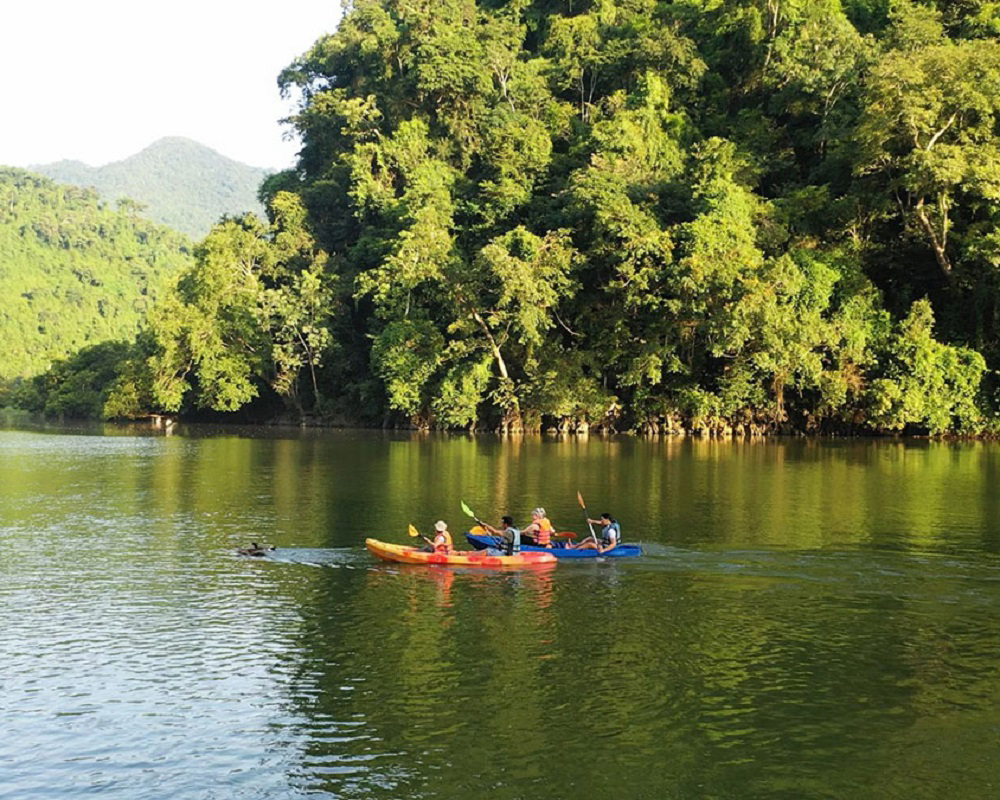
The added benefit of kayaking is that it allows them to get up close and personal with karsts and enter caverns that larger vessels just cannot reach. Since there is no motor, this form of transportation has zero impact on the environment, both in terms of air and noise pollution.
Ba Be is widely regarded as one of the best trekking areas in Vietnam, both by locals and foreigners. The Pia Booc mountain range, which is 1527 meters high, towers above the surrounding area.
The landscape changes dramatically from hill to hill, from dense vegetation to beautiful rice paddies. This is a great way to get to know the local culture and make new friends over a meal or a drink.
A tour guide is helpful since they are familiar with the best paths through the park and can show you the highlights while sharing interesting anecdotes about local history, culture, and flora and fauna.
>>Read more: Yok Don National Park in Dak Lak, Vietnam: Uncover the Splendors
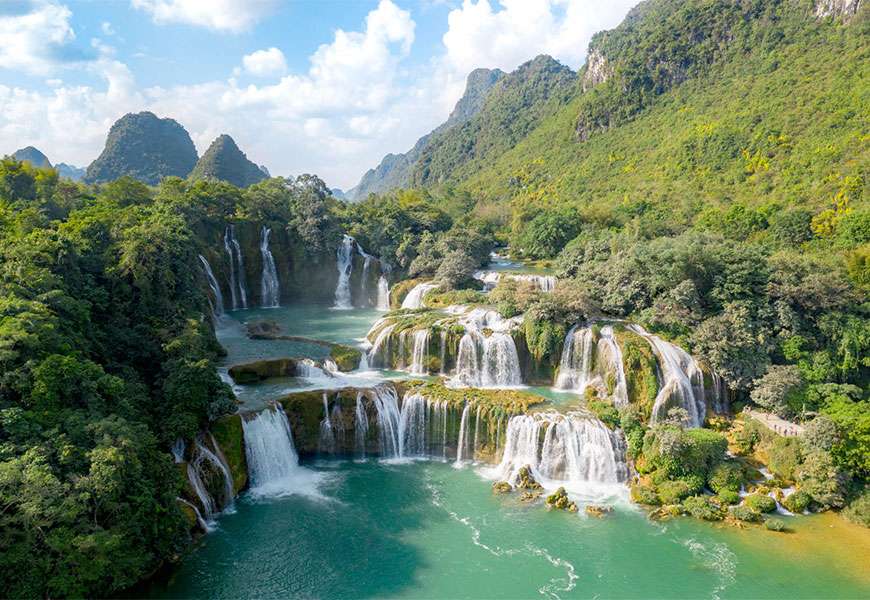
Biking is a great way to see the sights of Ba Be. Sports bikes may be rented here, so your tour guide can ride in style. The primary highways around the park are usually well-maintained and have low traffic volumes. In a day of cycling in the park, you may see the villages, the waterfall, and the cave of Hua Ma.
Local villages still practice long-standing fishing customs on the lake. From a long and narrow boat, they haul in shrimp and catfish. Those who enjoy fishing can get a glimpse into the rural lifestyle of the locals in Northern Vietnam and even teach them a thing or two about the sport.
A Look at the Minority Groups In and around Ba Be National Park, you'll find populations of Tay, Dzao, and H'mong. They settle in groupings ranging in size from a handful of scattered homes to sprawling cities.
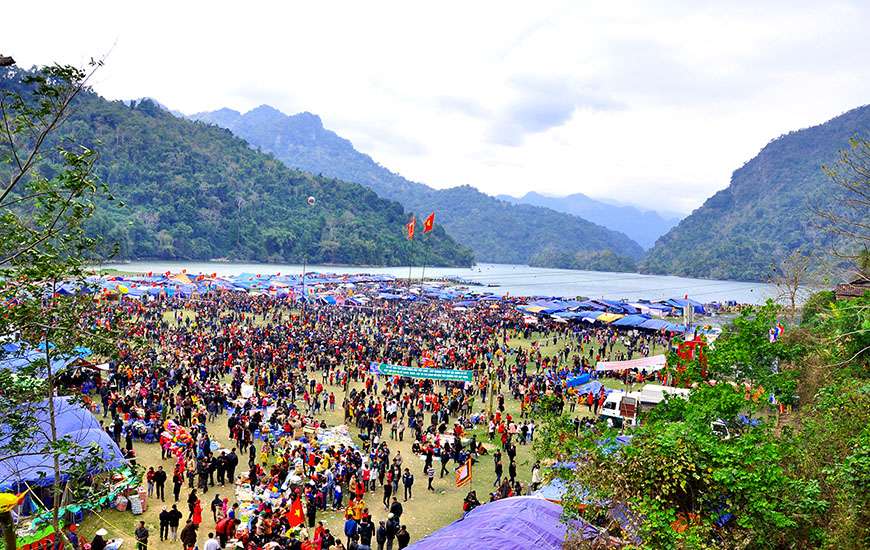
Pac Ngoi is the most interesting town in all of Ba Be. Around 40 traditional stilt houses built on a mountain ridge make up Pac Ngoi, which is home to a substantial Tay community.
Pac Ngoi's historic architecture and the Tay people's continued adherence to their cultural traditions are both testaments to the town's preservation efforts.
The inhabitants in the Na Nghe district are just as friendly and helpful as those in any other part of the city. After making your way through the silent forest, you'll be treated to stunning vistas of the valley below. However, H'mong communities tend to be more isolated, yet still having a strong sense of community.
>>Read more: taxi Hanoi to Ba Be
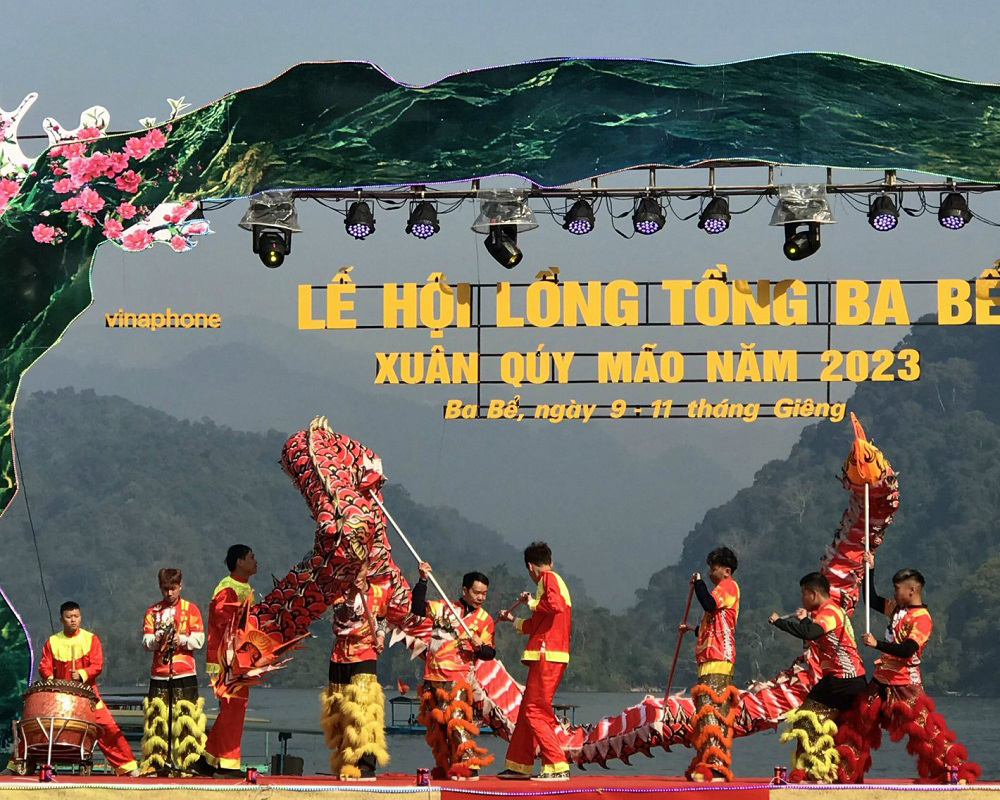
The Long Tong Festival is one of the earliest and most significant celebrations in Vietnamese history and culture. 'Long Tong' means 'go to the field' in Tay and Nung.
This festival is a spectacular celebration of the harvest of the first rice of the lunar year. The villagers ask the gods to grant them a year of good weather, a bountiful harvest, a prosperous year, and good health and happiness.
On the 9th and 10th days of the first lunar month, members of all ethnic minority groups congregate on the riverbank while dressed in their finest traditional garb.
Worship of the God of Agriculture is the highlight of the Festival. Exciting traditional games can be played in the open air, such as rice cooking competitions, singing contests, and more.
You should try the regional specialties while you're there. There are too many to list, but one of the most notable is "Lon Cap Nach," which literally means "pig carried under the arm" due to the massive size of these animals.
These pigs, which weigh in at roughly 10 kilograms and are raised free-range in the local fields and forests, produce exceptionally tasty and tender meat.
The bamboo tube rice known as "Com Lam" is another tasty alternative. There's a chayote meal that has sesame in it. The mild sweetness of the green veggie pairs well with the nuttiness of the sesame.
During the feast, you can try some of the local specialty, a rice wine called "Noc Suong." They could all be on the menu for the meal your host prepares for you. The following is a list of several excellent local eateries that cost between $5 and $15 USD per person:
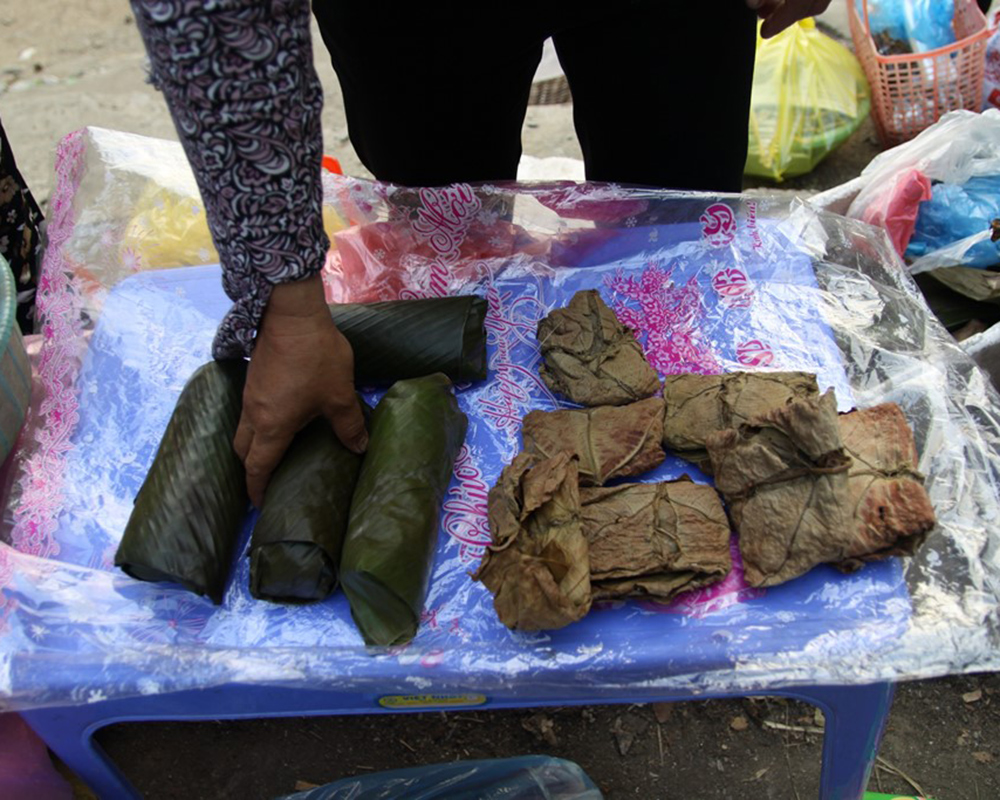
Here is a list of the restaurants :
- Pho Nui Bac Kan restaurant: 11C Duc Xuan Ward.
- Tam Cuong Bac Kan restaurant: Group 11, Song Cau Ward.
- Boong Hay Bac Kan restaurant: Tran Hung Dao Street.
- Cay Me restaurant: No 32, 8b Group, Tran Hung Dao Street.
- Tinh Tuong restaurant: Phu Thong Town, Bach Thong
Ba Be National Park has been featured in hundreds of newspapers, magazines, forums, and blogs, yet none of that publicity will prepare you for the park's breathtaking scenery, pure water, and unique local lifestyle.
Ban Gioc Waterfall, is one of Vietnam's Top 10 national park, Nguom Ngao Cave, Pac Po Historical Site, Trung Khanh and Phong Nam Valley, and others are all within easy traveling distance of one another, making Cao Bang Province an ideal base from which to explore the rest of Vietnam.
The majority of visitors to Northern Vietnam skip Ba Be National Park in favor of more popular destinations. Vietnam travel's Cao Bang - Ba Be tour discover or Northeast Vietnam adventure will take you to one of the most beautiful parks in the country.
Where you can go hiking, swimming, and staying in a homestay. In addition to helping you book flights and hotels, our Vietnamese travel agents can also help you craft a unique itinerary.
>>Read more: Ba Be tour 2 days from Hanoi by private car
